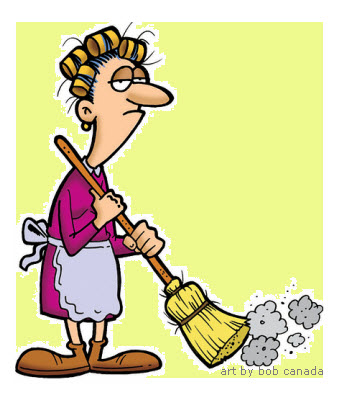 In a dusty area, most people sneeze. This is because dust contains so many different things that irritate the lining inside the nose. For example dust can be made of these things and more:
In a dusty area, most people sneeze. This is because dust contains so many different things that irritate the lining inside the nose. For example dust can be made of these things and more:
molds
pollen
roach poop
dust mite poop
pet and human dander (dead skin)
Sneezing in a dusty area is not the same as being allergic to things in dust. While there are lots of different things in dust and anyone of them can make a person sneeze, but being allergic is more than sneezing when someone sweeps.
Question: Why am I allergic to dust mites?
Answer:
An allergic reaction is your body’s defense against allergen, such as pollen or dust mite poop. When your body senses an antigen, your immune system (defense system) is triggered. Normally things like bacteria and toxins cause the immune system to produce histamines (defensive chemicals to fight invaders). But in some people their immune system is hypersensitive resulting in reaction to harmless substances. This is called being allergic to that substance.
The presence of histamines prompts different organs to get involved in the fight against the invader. These defenses include a running nose, cough, sneezing, and watery eyes. All of these responses work to cleanse the body of the invader. The problem is that there really is no invader. It is a false alarm.
One way to control allergic symptoms is to inactivate the histamine. This is done with a chemical called an antihistamine. This chemical works by attaching itself to histamines, which prevents them from working–the histamine is inactive.
Anything can be an allergen. If you are allergic to dust mites, you are actually allergic to the poop of the dust mites. To get rid of the poop you must get rid of the dust mite. This is easier said than done. For information about dust mites and how to reduce the number of dust mites in your home, see ALLERGEN: DUST MITE POOP
The dust mite is a microscopic, spider-like creature which is found in homes. It is primarily in carpets, mattresses and upholstered furniture and thrives in humid and warm conditions. The dust mite feeds on shed scales from human skin! The waste products produced by these mites are highly allergenic (able to cause allergic reaction). These waste products continue to cause allergic symptoms even after the mite that produced them has died.
Where do dust mites live?
The greatest numbers of dust mites can be found in carpets, which provide the best conditions (warmth, humidity and food) for their growth. Mites are also present in mattresses, pillows, blankets, upholstered furniture, curtains and similar fabrics. Female mites can lay 25 to 50 eggs, with a new generation produced every three weeks. It is therefore easy to see why carpets may contain such large numbers of living and dead mites.
How can I control dust mites?
Scientific studies of dust-allergic patients have shown that taking steps to minimize dust mite exposure in the bedroom can lead to a decrease in allergic symptoms and medication requirements. The reason for the focus on the bedroom is that most people spend one-third or more of their day there. As a result, it is often the room with the greatest number of dust mites. Important dust control measures are noted below: